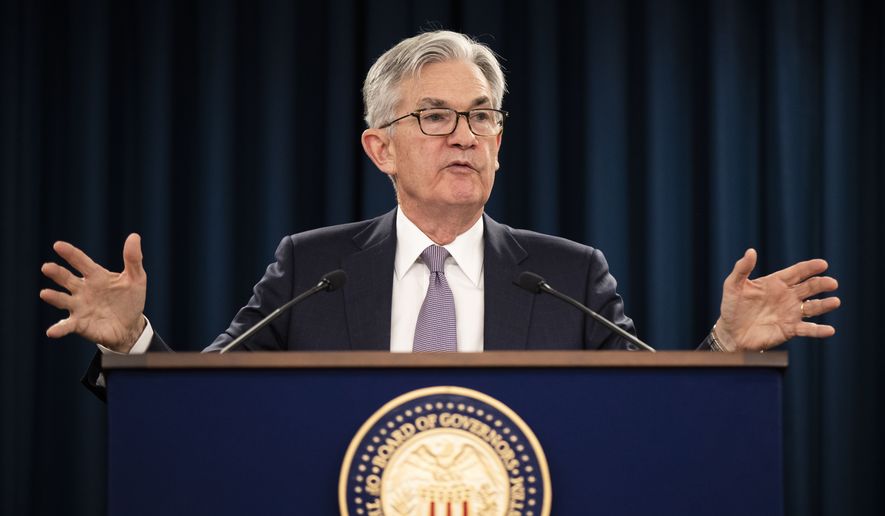OPINION:
Five decades of economics have taught me trouble comes when you least expect it, and the Federal Reserve, Treasury and their brethren abroad are often clueless about what to do.
Government officials, business leaders and academics privileged to attend Davos or the Fed’s annual conclave at Jackson Hole are convinced that President Trump’s trade wars and Boris Johnson’s Brexit campaign created great uncertainty, hammered down investment and were root causes of slow growth.
Now, the Phase-One deal with China and Mr. Johnson’s masterful ascent, along with corporate tax cuts and deregulation, have the administration expecting good times for the president’s reelection campaign.
The International Monetary Fund (IMF) has raised its global growth forecasts to 3.3 percent for 2020 from 2.9 percent last year
All this optimism ignores increasingly tough structural challenges and creeping decadence in the thinking of policymakers and the economics profession.
Even before the coronavirus, China’s growth was slowing under the weight of too much debt from wasteful state-directed investment and real estate development. Now the epidemic has made plain the economic costs of diverting government funds to the military and efforts to pirate Western technology from badly needed public investments like hospitals.
The EU’s largest economies are in a permanent funk. Manufacturing is one quarter of Germany’s prosperity and terribly dependent on gas-powered automobiles, Italy is in perpetual political dysfunction and both have chronically troubled banks. No one can govern France.
Boeing’s 737 Max production shutdown will knock half a point off first quarter U.S. growth. Experience with SARS and China’s enlarged role in global supply chains indicates a 3 percentage point reduction in its GDP from the coronavirus could reduce U.S. growth by 0.3 points.
The U.S. economy could expand as little as 1 percent in the first quarter. Given that some sectors like health care grow no matter what, that implies others could dip into recession — read autos and restaurants.
An aging global population is saving a larger share of GDP and money looking for yield is moving into real estate in global cities like New York, London and Vancouver — creating the danger for another bubble then bust. Those additional savings are a significant drag on demand for goods and services in all the major economies, and that requires much bigger government deficits to make up the difference than are in the cards.
The bottom line is we are one more big shock away from a global recession.
Phase Two discussions on China’s predatory industrial policies won’t yield much and that will confront Mr. Trump with a choice between reelection popularity and new tough measures. After the election, all bets on restraint go off.
Until December, trade across the English Channel continues as before Brexit, but the EU is demanding that the U.K. follow Brussels’ standards on environmental and social regulations, subsidies and taxes for a permanent free-trade deal. That defeats London’s purposes in leaving and prospects for a hard break will increasingly come into focus as the year progresses.
Beijing could decide protecting its population from diseases is more important than a bigger navy and industrial espionage. And spend a lot more on hospitals, schools and other urgently-needed social investments, but don’t bet on it.
The European Central Bank remains delusional. After six years of negative interest rates with few good results, Christine Lagarde — a lawyer — promises more of the same.
The Fed is searching for new tools — perhaps.
One debate is about whether to set ceilings for longer-term Treasury rates instead of a target for how many of bonds it purchases. As the Fed must buy bonds to hit its target, that is operationally the same.
As the impeachment process demonstrated, lawyers are good at circular reasoning — and these days a lawyer also runs the Fed.
Former Fed Chairman Ben Bernanke and economists who advise current Chairman Jerome Powell believe a publicly stated commitment to keep interest rates below a ceiling until the economy hits specific goals could deliver the equivalent of a 3 percent interest rate cut. In a recession, the Fed must find a stimulus tool that powerful, because it does not want to cut the federal funds rate — now about 1.6 percent — below zero.
Folly heaped on folly. Does anyone really believe the Fed would raise rates in a crisis?
Either major governments — including the stubborn Germans — spend a lot more, or the Western economies are stuck between lethargic growth and recession for the indefinite future.
• Peter Morici is an economist and business professor at the University of Maryland, and a national columnist.




Please read our comment policy before commenting.